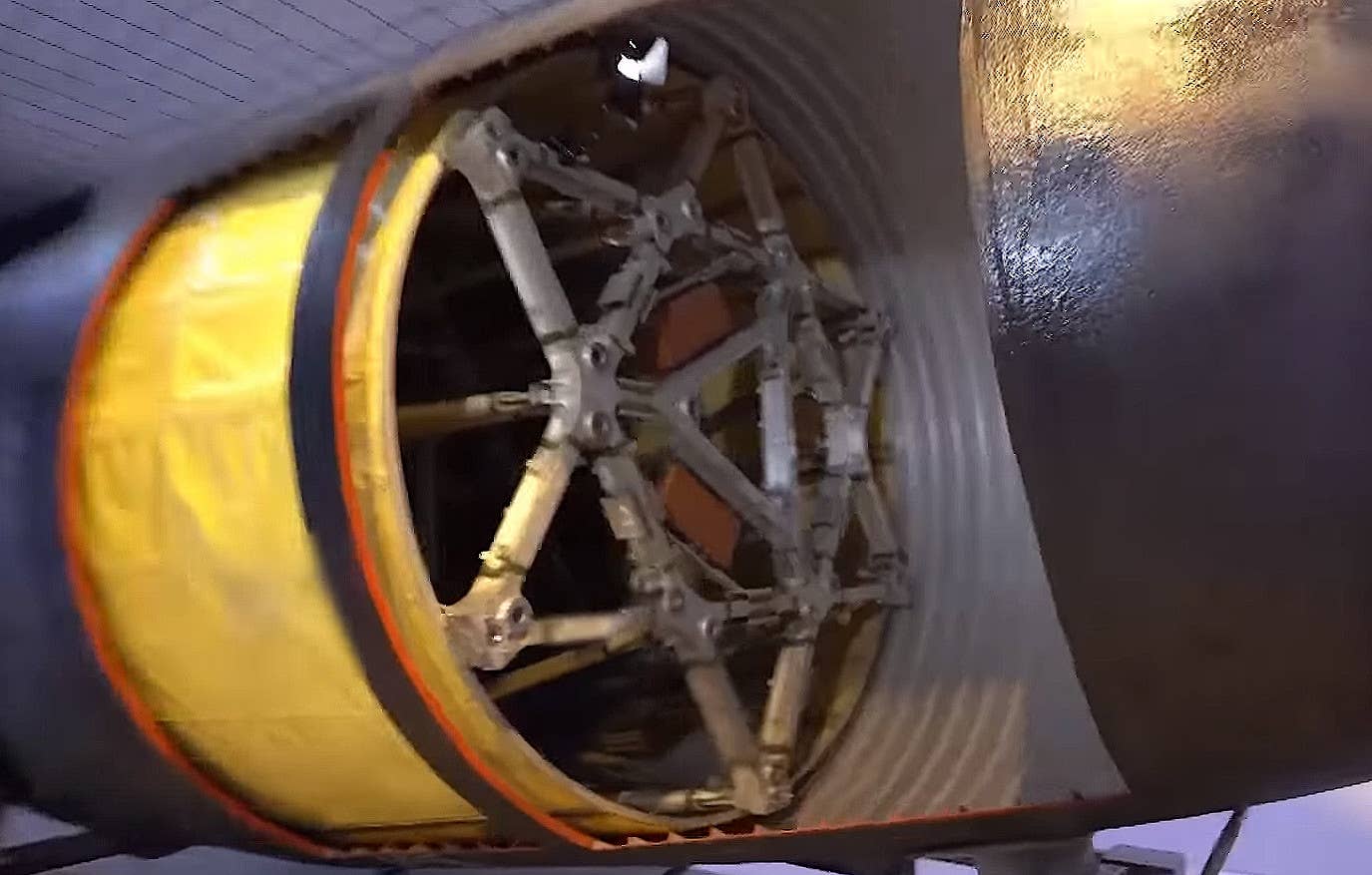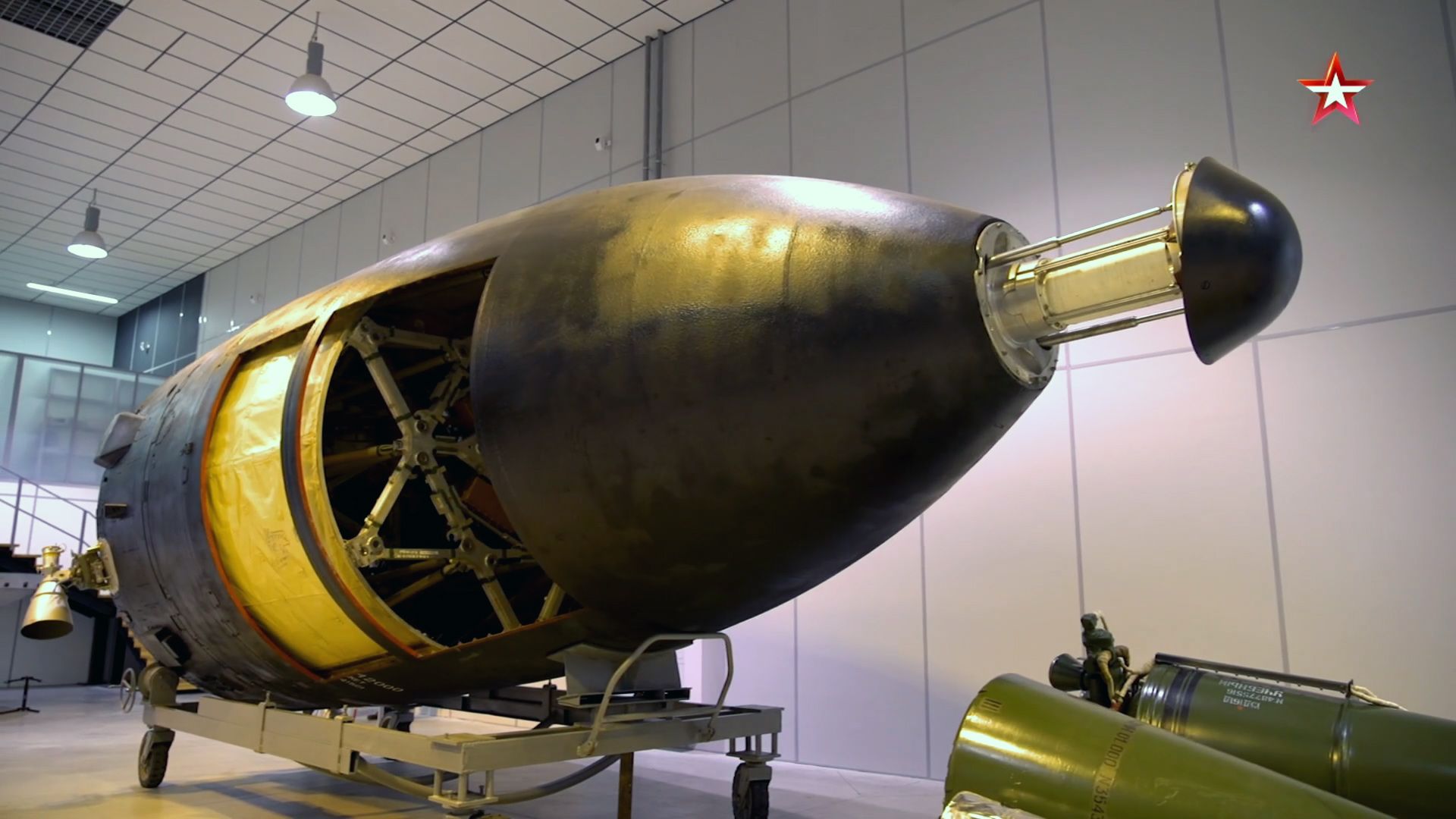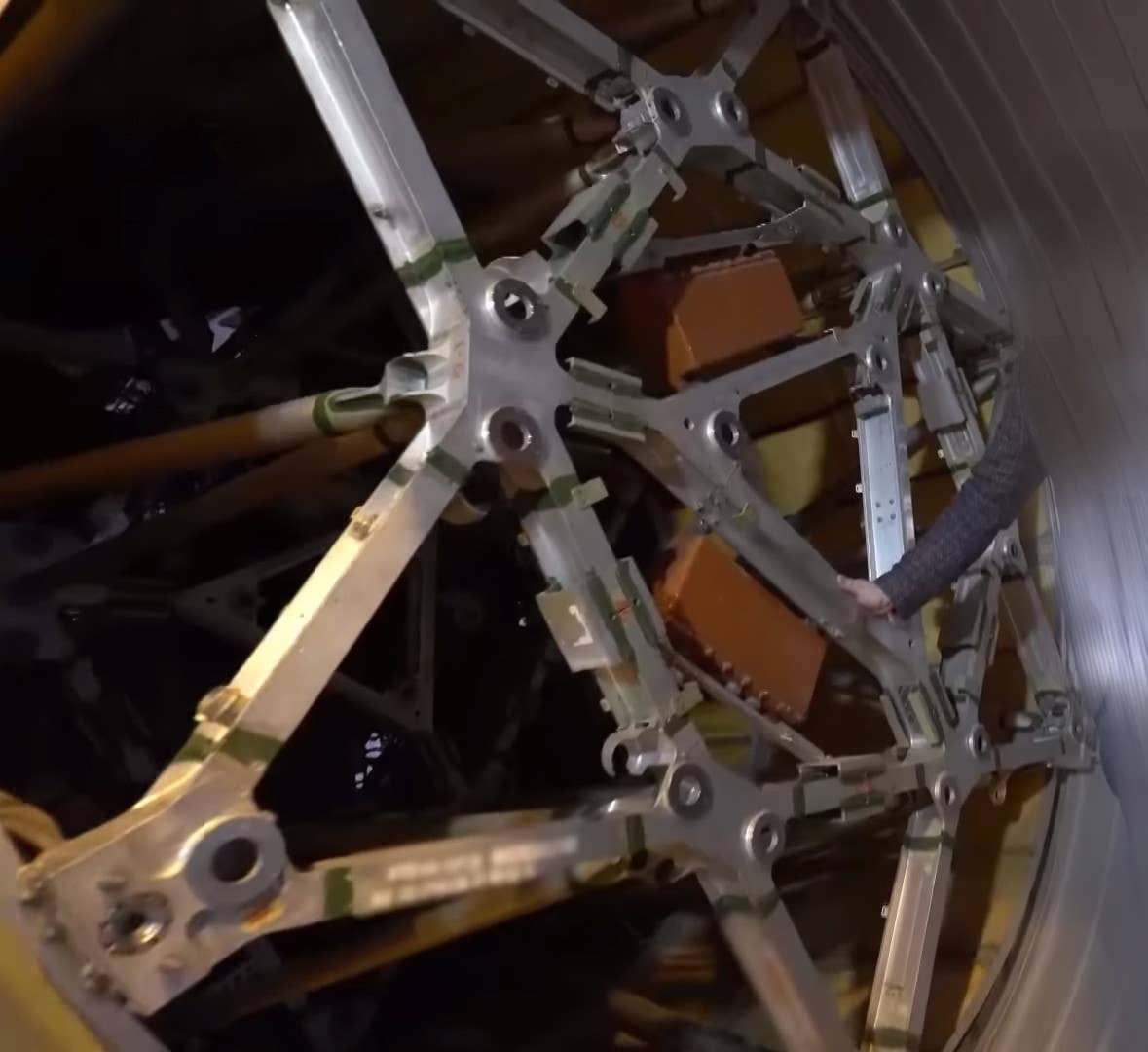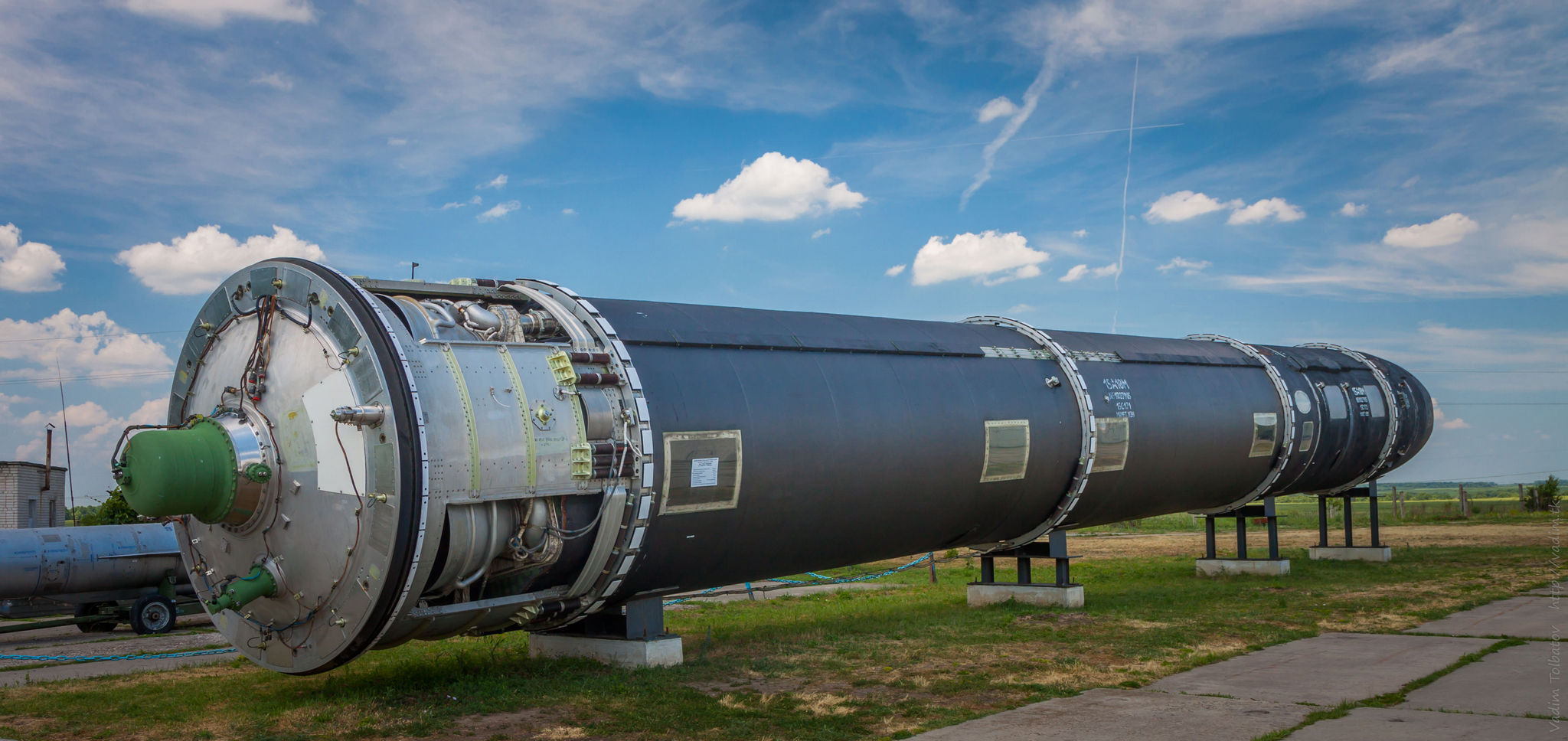The R-36M2 intercontinental ballistic missile’s payload bus, which contains the weapon’s nuclear warheads, has been made public by Russian state media outlets for the first time.
This missile, also referred to as the SS-18 Mod 5 Satan in the West, contains one of the heaviest payloads designed for an ICBM, making it one of the world’s most dangerous missiles.
The mechanism to deliver multiple warheads to different targets is known as a “multiple independently targetable reentry vehicle,” or MIRV.
The detailed images of the R-36M2 payload bus were first shared on Twitter by Dmitry Kornev, a Russian military analyst on his blog ‘Military Russia.’
The footage was released following the RS-28 Sarmat ICBM’s first full-scale launch in April 2022. The pictures Kornev posted online clearly demonstrate how big the R-36M2 is by showcasing the size of the payload bus alone.
1/ SS-18 mod5 SATAN / R-36M2 / 15A18M combat stage (bus) from several videos appeared on Russian TV after the first and so far the only launch of the Sarmat heavy ICBM on April 20, 2022
Firstly, for the first time we see in such detail the fully combat stage (bus) pic.twitter.com/3bPDcwxQRg
— MilitaryRussia.Ru (@DnKornev) November 20, 2022
Up to 14 warheads can fit on the bus, arranged in two rows of seven. Kornev believes that each of these missiles typically carries ten warheads.
Instead, the remaining four slots are occupied by decoys and other tools designed to make it difficult for opposing troops to intercept incoming projectiles.
There is some dissension about the estimated output of these warheads, with several reports claiming they are in the 550-750 kiloton range, while some claim they could be more lethal, ranging between 750 kilotons and one megaton.

Kornev also posted screengrabs showing several objects in front of the bus, including what appear to be decoys or at least mock-ups.
The bus appears to have four separate rocket motors at the back that would launch it into space and then deliver its warheads and decoys over numerous targets along a predetermined course.
Meanwhile, Kornev said that the Russian missile’s protrusion is a system component for detaching the nose cone from the rest of the payload bus to unleash the warheads and decoys.
R-36 (SS-18 Satan) Intercontinental Ballistic Missile
It’s unknown why the Russians now chose to showcase these R-36M2 in public. The RS-28 Sarmat, also known as the SS-X-30 Satan 2, is intended to replace these missiles completely. However, it is unknown when Satan 2 will be put into service.

The Soviet Union began working on the R-36M2, a two-stage liquid-fueled silo-launched ICBM, in the early 1980s as a more effective replacement for earlier R-36M versions. In the 1970s, the R-36M started to phase out earlier R-36-series missiles.
The R-36M, designed by the Yuzhnoye Design Bureau for the Soviet Union, served as the foundation for the R-36M2. This armament system consisted of an intercontinental ballistic missile modified from an earlier Soviet missile and stored in hardened silos.

The R-36M2, frequently referred to as a heavyweight ICBM, is massive, measuring almost 10 feet in diameter (three meters) and weighing just over 211 tons when fully fueled, according to the Federation of American Scientists (FAS).
Comparatively, the LGM-30G Minuteman III of the US Air Force measures just under 60 feet (18.3 meters) in length, is five and a half feet (1.67 meters) wide, and weighs just under 40 tons when fired.
The R-36M family of missiles is categorized as “heavies” because of their enormous size and power. The R-36M and its variations were at the core of arms control negotiations between the USSR and the United States for a significant portion of the latter half of the 20th century; these negotiations led to a cap on the overall number of R-36Ms built and deployed.

The missile’s extended range has concerned western analysts because they believe Russia may employ it as a first-strike capability. The importance of the weapon system in arms control negotiations has repeatedly demonstrated how seriously the West takes this missile as a credible threat.
The R-36M2 is a cold-launched weapon system, unlike its Minuteman III counterpart from the United States. This capability enables the missile to be deployed without seriously harming the silo it is housed in.
American missiles are “hot launched,” which renders the respective missile silos useless after launch. In the event of a protracted nuclear confrontation between Russia and the United States, this technological disparity could prove to be a significant advantage for Moscow.
- Contact the author at ashishmichel(at)gmail.com
- Follow EurAsian Times on Google News




